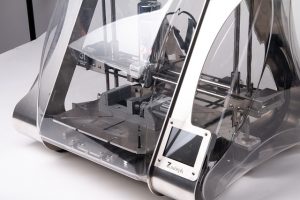
3D printing has evolved over the years. In addition to fused filament fabrication (FFF), there are now other technologies used to build three-dimensional objects from raw materials. Stereolithography is one such alternative 3D printing technology. Like FFF, it involves the use of layers. SLA, however, is an entirely different type of 3D printing technology and requires a specific type of 3D printer.
What Is SLA?
Also known as optical fabrication and resin printing, SLA is a 3D printing technology that’s commonly used to build prototypes, parts and other objects. It involves the use of an SLA 3D printer. SLA 3D printers will build the object layer by layer.
How SLA 3D Printers Work
SLA 3D printers work by building objects as directed by computer-aided design (CAD) software. You can design an object in CAD software, after which you can send the design to an SLA 3D printer. The SLA 3D printer will build the object as determined by the CAD software.
All SLA 3D printers build objects layer by layer. They’ll build the base layer first. After completing the base layer, SLA 3D printers will begin building the next-highest layer. They’ll continue building all of the layers until the object has been completed.
While FFF 3D printers build objects by depositing material onto a substrate, SLA 3D printers work in a different way. They don’t actually deposit materials. Rather, SLA 3D printers build objects by exposing polymer resin to an ultraviolet (UV) light source. The polymer resin is placed inside of a vat. In its default state, the resin is liquid. To build an object, the SLA 3D printer will run a UV laser over the polymer resin.
Exposure to the UV laser causes the monomers and oligomers within the resin to cross-like together, thus forming polymers. It’s essentially a curing process. When exposed to the UV laser, the polymer resin solidifies. SLA 3D printers are able to build objects layer by layer by exposing the polymer resin to a UV laser.
Benefits of SLA 3D Printing
SLA 3D printing is faster than many other technologies. The exact amount of time needed to build an object can vary depending on the object’s size, dimensions and other factors. Nonetheless, SLA is faster than many other 3D printing technologies, including FFF.
Objects built with SLA 3D printing are also strong. This is one of the reasons why SLA 3D printing is commonly used for prototyping. It allows businesses to build strong and durable prototypes.
